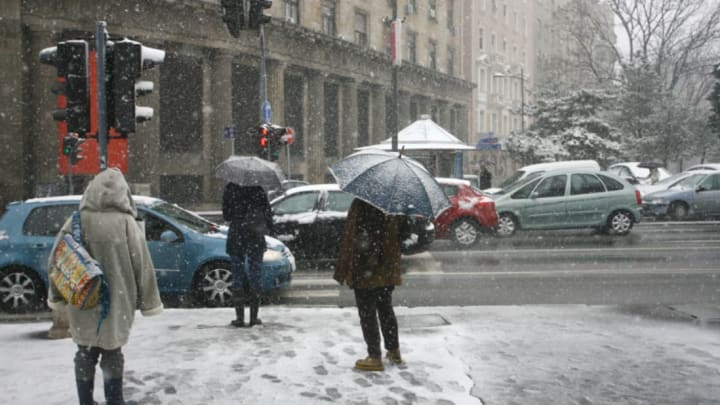When Does Freezing Rain Become Sleet?
By Nick Greene

Unless you live in a part of the country that doesn't endure any type of winter, chances are you've seen a weather forecast that has made you think, "Ugh, freezing rain." You have probably also seen one that has made you go, "Ugh, sleet." But what is the difference between these two types of precipitation, and what do they have in common, besides the fact that they make your life miserable and your socks wet?
Freezing rain and sleet are very similar. They both occur when rain that has formed in a warm layer of air falls through a colder layer that sits at ground level. The difference between the two depends on the size of that cold layer through which the rain passes.
According to the National Weather Service, freezing rain passes through a thinner layer of cold air than sleet. The rain doesn't have time to freeze, so "the water freezes on contact with the surface, creating a coating of ice on whatever the raindrops contact." Sleet, meanwhile, goes through more cold air, and the liquid raindrops refreeze and are in that state before they hit the ground. (Snow never goes through any warm layer at all).
Once on the ground, both can create icy conditions, although sleet tends to also accumulate as slush. Either way, it's wise to throw a change of socks in your bag when you leave the house and venture into either type of frigid muck.